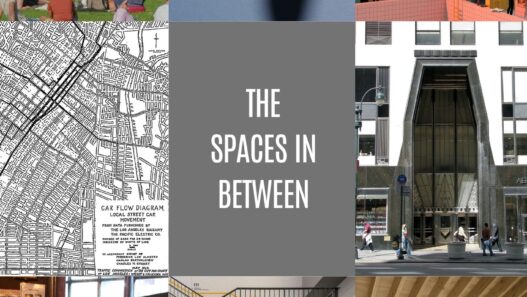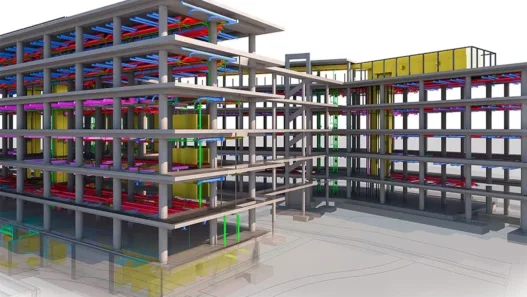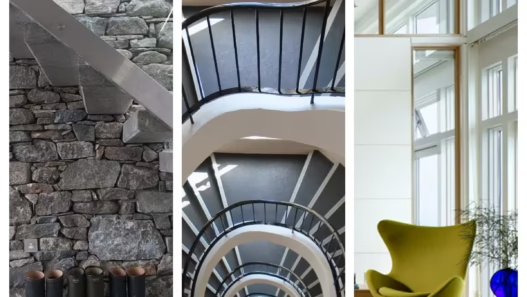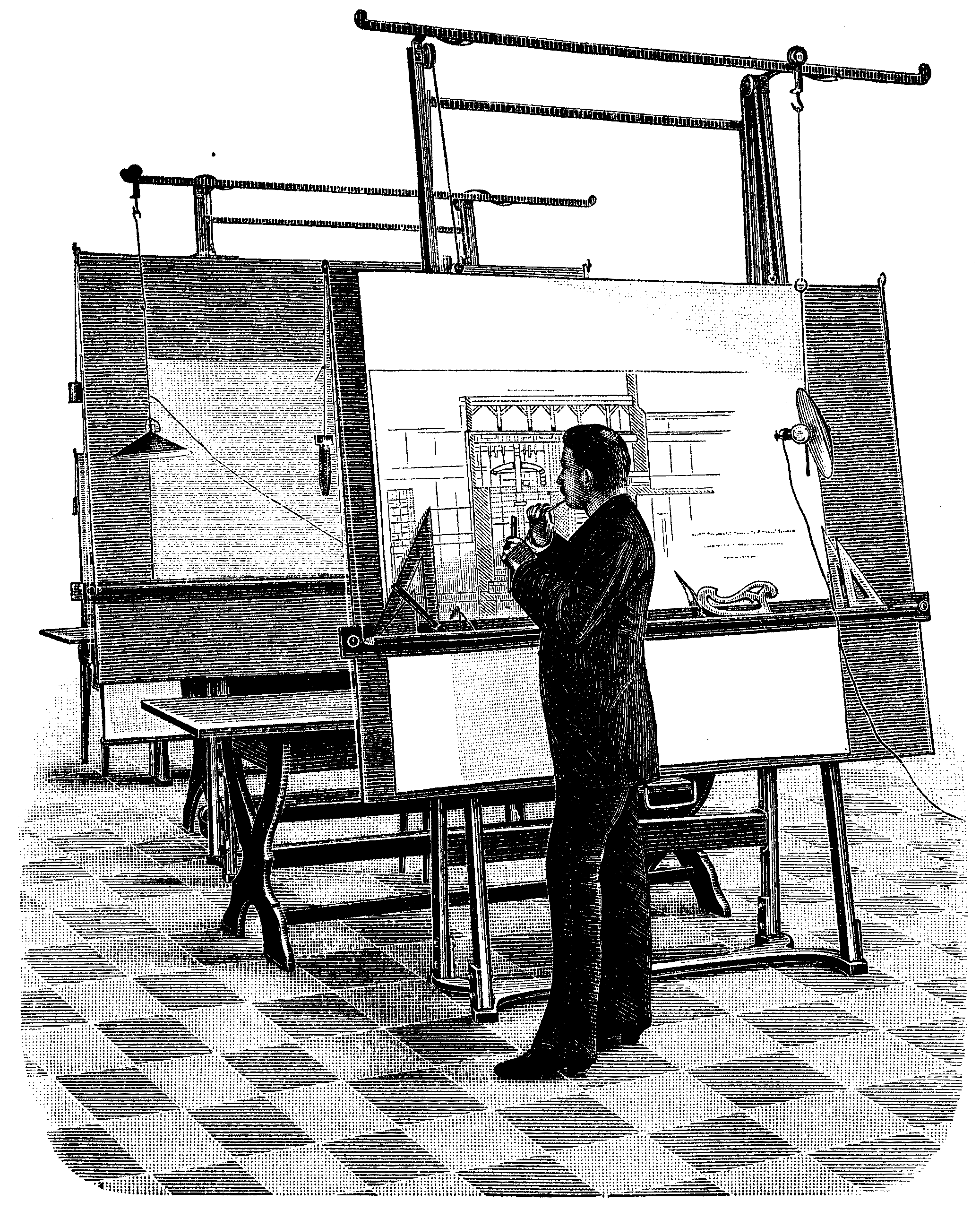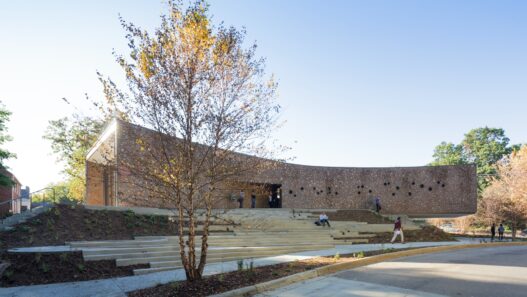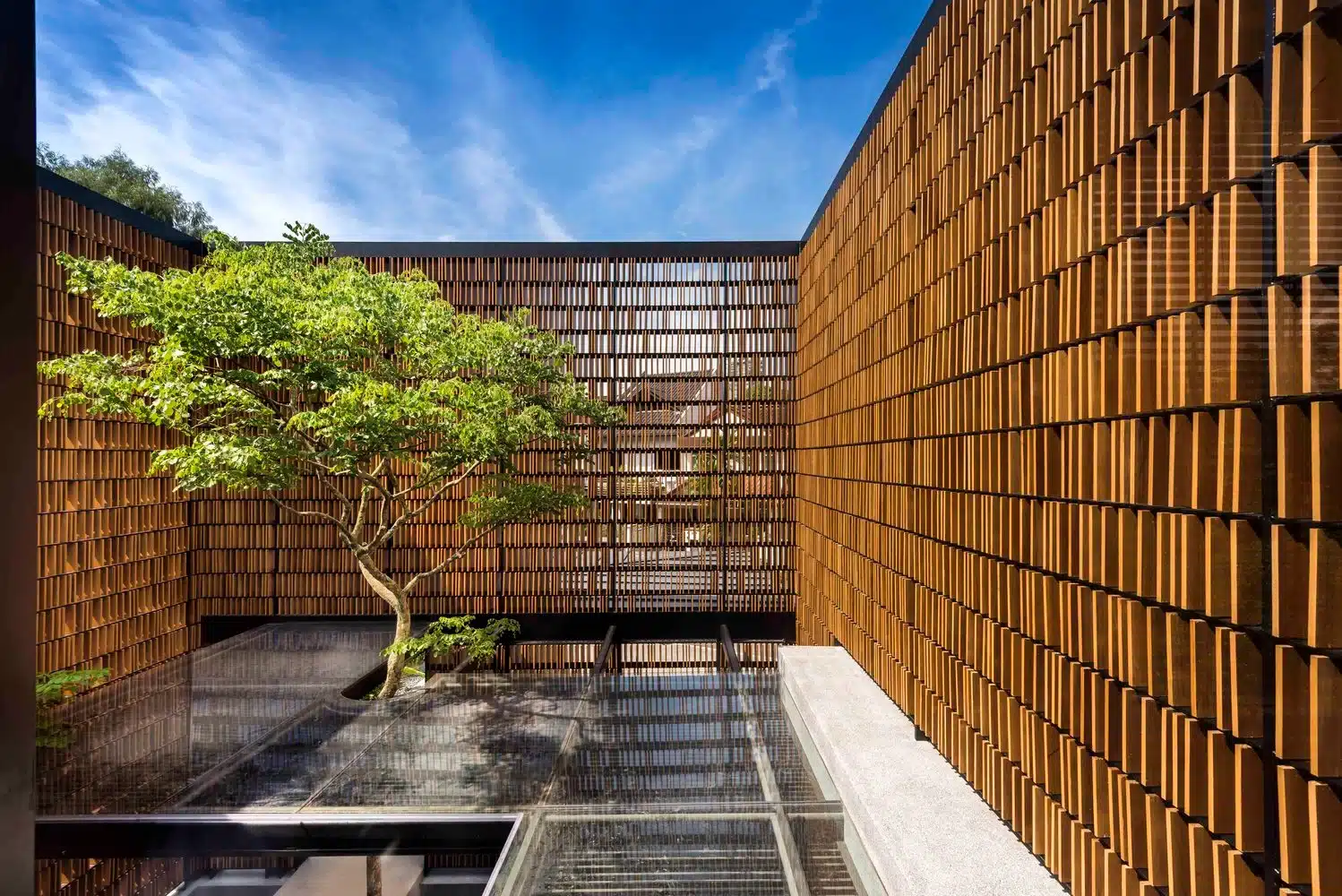Space exploration architecture is a fascinating field that combines the principles of architecture, engineering and science to create facilities that support human missions beyond our planet. As we move further into space, the need for carefully designed structures becomes ever more important. These facilities must not only be functional and safe, they must also inspire and adapt to the unique challenges of human space travel. Let’s enter the world of space exploration architecture and understand its importance.
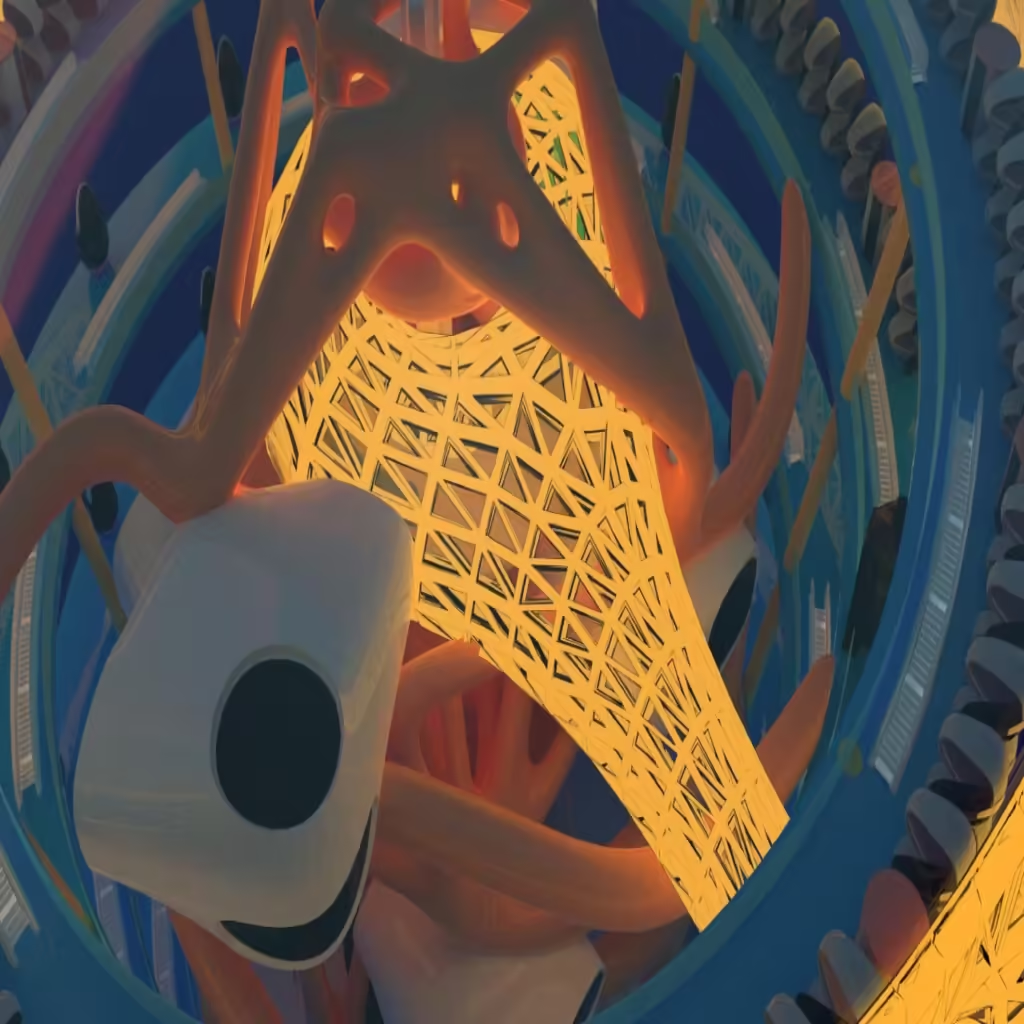
Defining Space Exploration Facilities: Purpose and Importance
Space exploration facilities encompass a wide range of structures designed to support scientific research, spacecraft launches and human settlement in space. These facilities include launch pads, mission control centers, laboratories and living quarters for astronauts.
- Purpose: The primary purpose of these facilities is to enable and support space missions. They provide the infrastructure necessary for the preparation, launch and operation of spacecraft, as well as environments for astronauts to live and work during long missions.
- Significance: The importance of space exploration architecture lies in its role in the development of human knowledge and capabilities. By designing effective facilities, architects and engineers contribute to our understanding of the universe, the development of new technologies and the potential for human colonization of other planets.
- Safety and Sustainability: Space facilities must prioritize safety by adapting to the harsh conditions of space and ensuring the well-being of astronauts. Furthermore, sustainable practices are becoming increasingly important as we strive to minimize our environmental impact even beyond Earth.
Historical Development of Space Exploration Architecture
The journey of space exploration architecture has evolved significantly since the beginning of the space age in the mid-20th century.
- Early Developments: Early space facilities, such as those used during the Apollo missions, were functional but simple. They were primarily focused on launching rockets and housing astronauts for short missions.
- Technological Advances: As technology has advanced, so has the complexity of space facilities. The introduction of modular designs and advanced materials has led to more sophisticated structures that can support longer duration missions, such as the International Space Station (ISS).
- Contemporary Vision: Architects today are redesigning space facilities with an emphasis on human factors, sustainability and integration with advanced technologies. Projects such as Mars habitats and lunar bases are being designed with future colonization and long-term settlement in mind.
Key Features of Effective Space Facility Design
Effective space facility design must address a number of challenges and considerations to ensure success.
- Adaptability: Space facilities must be adaptable to various missions and changing needs. Modular designs allow for easy reconfiguration or expansion as missions evolve.
- Safety and Flexibility: Given the unpredictable nature of space, safety is paramount. Structures must be resistant to extreme temperatures, radiation and the possible effects of micrometeoroids.
- Human-Centered Design: Astronauts’ well-being is of critical importance. Facilities should include elements that support mental health, such as natural light, private spaces and rest areas to improve quality of life during long missions.
- Technological Integration: Effective design seamlessly integrates advanced technologies, from life support systems to communications networks, ensuring astronauts have the tools they need to succeed.
The Role of Architecture in Supporting Scientific Research
Architecture plays a vital role in facilitating scientific research and exploration in space.
- Creating Research Environments: Space facilities should provide specialized environments for scientific experiments, such as clean rooms for materials testing and laboratories for biological research.
- Innovation Centers: Well-designed spaces foster collaboration and innovation among scientists and engineers. Open, flexible workspaces encourage teamwork and the sharing of ideas, which are crucial for advancing scientific knowledge.
- Public Engagement: Architecture also serves to engage the public. Facilities such as visitor centers and educational exhibits can inspire the next generation of explorers, highlighting the importance of space exploration in our shared future.
Overview of Global Trends in Space Exploration Facilities
As countries and private organizations invest in space exploration, several global trends are emerging in the design of space facilities.
- International Cooperation: Many space agencies are working together on projects such as the ISS and future lunar missions. This collaboration requires facilities that can support joint operations and research.
- Commercial Space Ventures: The rise of private companies in space exploration is changing the landscape. Facilities are being designed not only for government missions, but also for commercial ventures such as space tourism and private research.
- Sustainability Initiatives: Increasing emphasis is being placed on designing sustainable facilities that minimize resource use and environmental impact. This includes using renewable energy sources and recycling materials wherever possible.
- Focus on Human Settlement: In preparation for missions to Mars and beyond, there is an increased focus on designing habitats that can support human habitation for the long term, incorporating elements of agriculture, waste recycling and psychological well-being.
As a result, space exploration architecture is a dynamic and evolving field that plays a critical role in supporting humanity’s quest to explore the universe. By creating facilities that are safe, adaptable and conducive to scientific exploration, architects and designers contribute to a future where space travel becomes a reality for more than just a select few. As we continue to push the boundaries of what is possible, the importance of thoughtful and innovative space exploration architecture will only grow.
Architectural Elements of Space Exploration Facilities
The architecture of space exploration facilities encompasses a unique set of challenges and requirements that demand innovative solutions that prioritize safety, functionality and adaptability. As humanity embarks on the quest to explore beyond our planet, the architectural elements of these facilities become crucial. Let’s examine the critical components that determine the design of space exploration facilities.
Structural Design: Ensuring Safety and Durability
The structural design of space exploration facilities is essential to ensure the safety and durability of the structures that house astronauts and equipment.
- Material Selection: Architects must choose materials that can withstand the harsh conditions of space, including extreme temperatures and radiation. Advanced composites, metals and reinforced materials are often used to increase strength while minimizing weight.
- Payload Carrying Capacity: The structural integrity of launch pads, habitats and research facilities must be meticulously calculated to support the enormous forces applied during rocket launches and landings. Engineers use complex modeling techniques to simulate these forces and design structures accordingly.
- Seismic and Impact Resistance: Facilities should be designed to withstand potential impacts from micrometeoroids and other debris. This includes the use of rounded shapes and reinforced surfaces to deflect impacts and the incorporation of shock-absorbing materials to protect occupants and equipment.
- Safe Evacuation: In emergency situations, the structural design should facilitate safe and efficient evacuation. This requires multiple escape routes, reinforced exits and clear signage to guide astronauts through potentially stressful situations.
Integrating Advanced Technologies into Facility Design
The integration of advanced technologies is the hallmark of modern space exploration architecture and ensures the efficient and effective operation of facilities.
- Intelligent Systems: Facilities are increasingly equipped with smart technologies that monitor and control various functions such as lighting, temperature and life support systems. These systems can be automatically adjusted to optimize conditions for astronauts and equipment.
- Robotics and Automation: Robotics plays a crucial role in space exploration facilities. Automated systems can help with maintenance, conduct experiments and even move supplies, reducing the workload on astronauts and improving safety.
- Communications Infrastructure: Reliable communications systems are essential for coordinating missions and transmitting data back to Earth. Facilities must have advanced satellite communications and data management systems to ensure seamless connectivity.
- Virtual Reality and Simulation: Advanced simulation technologies, including virtual and augmented reality, are used to train astronauts and rehearse missions. These technologies enable realistic execution scenarios in a controlled environment.
Environmental Control Systems: Sustaining Livability
Environmental control systems are vital for maintaining a habitable atmosphere in space facilities and ensuring the health and comfort of astronauts.
- Life Support Systems: These systems regulate air quality, temperature, humidity and pressure within habitats. They must be carefully designed to recycle air and water to support long-term missions with limited resources.
- Radiation Protection: Space facilities should include shielding to protect astronauts from harmful cosmic radiation. This could include the use of thick walls made of materials such as polyethylene or the inclusion of underground structures to provide additional protection.
- Waste Management: Efficient waste management systems are essential for sustainability in space. Facilities must be equipped to deal with organic waste and convert it into usable resources, as well as safely manage hazardous materials.
- Psychological Welfare: Environmental control systems also consider the psychological needs of astronauts. The inclusion of natural light, views of the external environment and rest areas can significantly improve mental health during long missions.
Modular Design: Flexibility for Future Expansion
Modular design is a fundamental principle in the architecture of space exploration facilities, offering flexibility and adaptability for future needs.
- Pre-Fabricated Modules: The use of pre-fabricated modules allows for efficient construction and easy assembly in space. These modules can be transported to their destination and assembled on-site, reducing construction complexity.
- Expandable Habitats: Modular designs allow habitats to be expanded as missions grow or new research needs arise. Additional modules can be added to accommodate more astronauts or new laboratories, keeping facilities up-to-date over time.
- Replaceable Components: Designing plants with interchangeable components allows for upgrades and replacements without major overhauls. This adaptability is crucial as technology evolves and new discoveries are made.
- Scalability: Modular designs can be scaled up or down based on mission requirements, making them ideal for both short-term missions and long-term colonization efforts.
Landscaping and Site Selection for Space Facilities
Landscaping and site selection of space exploration facilities are critical to ensure functionality and minimize environmental impact.
- Site Selection Criteria: Choosing the right location for space facilities takes into account factors such as accessibility to launch sites, geological stability and proximity to resources. Exposure to sunlight and access to water ice are also taken into account when choosing a location for lunar or Martian bases.
- Integration with the Environment: Landscape works should focus on minimizing the degradation of the natural environment. This includes protecting local ecosystems and taking into account the visual impact of the facility on the landscape.
- Functional Open Spaces: Open spaces can be designed to support scientific research, such as testing materials in extraterrestrial conditions or conducting experiments in natural environments. These areas should be carefully planned to ensure safety and accessibility.
- Cultural and Aesthetic Considerations: As space exploration becomes more prominent, the architectural design and landscaping of facilities can reflect cultural values and aesthetic preferences, fostering a sense of pride and connection to the missions undertaken.
As a result, the architectural elements of space exploration facilities are versatile and combine safety, technology and adaptability to meet the challenges of life beyond Earth. As we continue to push the boundaries of our exploration efforts, thoughtful and innovative design will play a crucial role in shaping humanity’s future in space. By prioritizing these elements, we can create environments that not only support scientific endeavors, but also inspire the next generation of explorers.
Key Examples of Space Exploration Facilities
As humanity continues to explore the universe, several important facilities have emerged as landmarks on the journey of space exploration. Each of these places serves unique purposes and demonstrates the creativity and collaboration required to push the boundaries of our understanding of the universe. Let’s take a closer look at some of the most important space exploration facilities around the world.
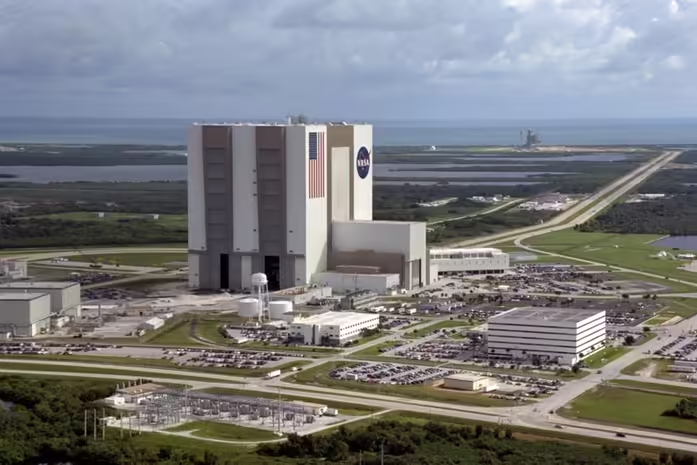
Kennedy Space Center, Florida: Center for Space Launch Operations
Kennedy Space Center (KSC) is perhaps the most iconic space launch facility in the United States, located on Merritt Island, Florida.
- Launch Complexes: KSC is home to several launch complexes, including the historic Launch Complex 39A, where the Apollo missions and Space Shuttle launches took place. The center is currently the launch site for SpaceX’s Falcon 9 rockets and NASA’s Artemis missions, which aim to return humans to the Moon.
- Mission Control: KSC has a state-of-the-art mission control center that oversees launch operations and ensures that every launch is conducted with precision and safety.
- Public Engagement: The Kennedy Space Center Visitor Complex offers educational experiences that allow the public to learn about space exploration through exhibits, astronaut encounters, and even rocket launches.
- Environmental Stewardship: Located within the Merritt Island National Wildlife Refuge, the center emphasizes a commitment to environmental protection while conducting space operations.
Johnson Space Center, Texas: Training Ground for Astronauts
Johnson Space Center (JSC) in Houston, Texas is the primary training facility for NASA astronauts.
- Astronaut Training: JSC hosts rigorous training programs that prepare astronauts for the challenges of space travel. This includes simulations, physical fitness training and instruction on the operation of spacecraft systems.
- Neutral Buoyancy Laboratory: One of the most notable features at JSC is the Neutral Buoyancy Laboratory, a large swimming pool used to simulate the microgravity environment of space. Astronauts perform spacewalks and other maneuvers underwater to prepare for their missions.
- Mission Control: The Center also houses the Mission Control Center, which monitors and supports crewed space missions from launch to landing, ensuring effective communication and problem solving during missions.
- Research and Development: JSC is involved in various research projects, including life sciences, robotics and the development of new technologies for future missions, including those to Mars.
European Space Agency’s ESTEC, Netherlands: A Technology Development Center
The European Space Research and Technology Center (ESTEC) in Noordwijk, the Netherlands, serves as the technical heart of the European Space Agency (ESA).
- Engineering and Testing: ESTEC is responsible for the design, development and testing of space missions and technologies. The center includes advanced laboratories and test facilities for spacecraft, satellites and instruments.
- Innovation Center: The Center plays an important role in fostering innovation in the European space industry by collaborating with various partners to develop cutting-edge technologies for future missions.
- Education and Outreach: ESTEC is also committed to education and outreach by providing training programs for engineers and scientists and by promoting public interest in space exploration through exhibitions and events.
- International Cooperation: As part of ESA, ESTEC contributes to global efforts in the field of space exploration by collaborating with other space agencies and organizations around the world.
Baikonur Cosmodrome, Kazakhstan: World’s First Spaceport
The Baikonur Cosmodrome in Kazakhstan is the world’s first and largest operational spaceport.
- Historical Importance: Baikonur is where the first man, Yuri Gagarin, was launched into space in 1961. Since then, it has been the launch site for numerous important missions, including crewed Soyuz flights to the International Space Station (ISS).
- Launch Facilities: The Cosmodrome has multiple launch pads and facilities designed to accommodate various types of spacecraft, including rockets used for both crewed and uncrewed missions.
- Global Cooperation: Baikonur serves as a launch site for many countries, including Russia and the United States, demonstrating the importance of international cooperation in space exploration.
- Cultural Heritage: It is not only a technological marvel, but also a cultural landmark that reflects the history of human spaceflight and the ongoing quest to explore the cosmos.
The International Space Station: A Wonder of Collaborative Engineering
The International Space Station (ISS) is a unique facility that represents the pinnacle of international cooperation in space exploration.
- The Living Laboratory: The ISS serves as a microgravity laboratory where scientists from around the world conduct experiments in a variety of fields, including biology, physics and materials science. It provides insights not possible on Earth.
- Global Collaboration: The ISS is a joint project involving multiple space agencies, including NASA, ESA, Roscosmos (Russia), JAXA (Japan) and CSA (Canada). This collaboration exemplifies the power of working together to achieve common goals.
- Crewed Missions: Astronauts live and work on the ISS for extended periods, conducting research and international diplomacy while developing technologies for future deep space missions.
- Public Engagement: The ISS also serves as an educational platform, inspiring students and the public through live broadcasts, educational programs and opportunities for astronauts to communicate with schools around the world.
In conclusion, these important examples of space exploration facilities highlight the incredible advances in architecture, engineering and international collaboration that have shaped our journey into space. Each facility plays a vital role in expanding our understanding of the universe and preparing for humankind’s next great leap forward in exploration. As we continue to innovate and explore, these centers of activity will remain at the forefront of our quest to reach new frontiers.
The Cultural Impact of Space Exploration Architecture
The architecture of space exploration facilities does more than serve functional purposes; it profoundly influences culture, education and international cooperation. As humanity’s reach extends beyond our planet, the design and structure of these facilities play a vital role in shaping public perception and participation in space exploration. Let’s explore the cultural impact of space exploration architecture and how it fosters curiosity, education and unity among nations.
Encouraging Public Interest and Participation in Space Exploration
The design of space exploration facilities is often awe-inspiring, capturing the public imagination and fostering a deeper interest in space science.
- Iconic Structures: Facilities like the Kennedy Space Center and Baikonur Cosmodrome are not just functional; they are symbols of human achievement. Their striking design and historical significance attract millions of visitors each year and increase public interest in space missions.
- Media Representation: Architectural elements of space facilities are frequently featured in documentaries, movies and news reports. This media exposure plays an important role in popularizing space exploration, making it accessible and relatable to the general public.
- Participation through Events: Public events such as rocket launches and open houses are often held at these facilities, allowing individuals to witness first-hand the excitement of space exploration. Such experiences can inspire future generations to consider careers in science, technology, engineering and math (STEM).
- Community Pride: The presence of a space facility can instill a sense of pride in local communities as they become part of a global narrative about exploration and discovery. This pride can lead to increased support for educational programs and local initiatives related to space science.
Educational Opportunities and Outreach Programs at Space Facilities
Space exploration architecture serves as a platform for educational programs that engage the public and inspire future scientists and engineers.
- Visitor Centers and Museums: Many space facilities have visitor centers that offer interactive exhibits, educational displays and immersive experiences. These centers foster curiosity about space by providing valuable learning opportunities for people of all ages.
- Workshops and Seminars: Institutions such as NASA’s Johnson Space Center offer workshops and seminars for students and educators. These programs often include hands-on activities that allow participants to explore scientific principles in a fun and engaging way.
- STEM Outreach: Space facilities often partner with schools and educational organizations to promote STEM education. Programs may include guest talks by astronauts or scientists, field trips to space centers, and curriculum resources for teachers.
- Online Learning: With the rise of digital technology, many space agencies have developed online platforms that provide educational resources, virtual tours and live streaming events. This accessibility allows people around the world to engage with space exploration.
Promoting International Cooperation in Space Exploration
The architecture of space research facilities often reflects the collaborative spirit of international space exploration and encourages partnerships between nations.
- Joint Missions: Facilities designed for international cooperation, such as the European Space Agency’s ESTEC, serve as hubs for joint missions. These collaborations promote the sharing of knowledge, resources and expertise across borders.
- Cultural Exchange: Architectural designs that accommodate different cultures in space facilities promote inclusiveness and cultural exchange. This exchange fosters mutual understanding and respect between nations involved in space exploration.
- Global Conferences: Space facilities frequently host international conferences and summits, bringing together scientists, engineers and policy makers from around the world. These events facilitate discussions on common goals, challenges and advances in space exploration.
- Collaborative Projects: The International Space Station (ISS) is a prime example of how space exploration architecture fosters international cooperation. Designed and built by multiple space agencies, the ISS is a testament to what nations can achieve when they work together towards a common goal.
Preserving Scientific Heritage through Architectural Design
Space exploration facilities play a crucial role in preserving scientific heritage, ensuring that the achievements of the past are honored and remembered.
- Historical Preservation: Many space facilities have areas dedicated to the preservation of artifacts from past missions, such as spacecraft, instruments and documents. This preservation allows future generations to learn about the history of space exploration.
- Cultural Significance: The architectural design of these facilities often reflects the cultural values and aspirations of the time. By examining these designs, we can gain insight into the societal impact of space exploration and the collective vision for the future.
- Commemorative Spaces: Facilities may include memorials or special areas honoring the contributions of astronauts, scientists and engineers. These spaces serve as reminders of the sacrifices made and progress made in the pursuit of knowledge.
- Education through Heritage: By showcasing the history of space exploration through architecture, facilities can educate visitors about the development of space technology and the importance of scientific research.
Case Studies: Successful Community Engagement Initiatives
Some space exploration facilities have implemented successful community engagement initiatives that demonstrate the cultural impact of their architecture.
- NASA’s Artemis Program: Kennedy Space Center has engaged with the local community through the Artemis program, which aims to return humans to the Moon. Educational events and public outreach initiatives have engaged schools, local organizations, and the general public, increasing excitement about the program’s goals.
- Space Center Houston: This facility has developed numerous programs aimed at engaging the community, including a STEM education program that reaches thousands of students each year. Its interactive exhibits and astronaut encounters create a meaningful connection with space exploration.
- European Space Agency’s Open Days: ESTEC hosts open days welcoming the public to explore the facility. These events include guided tours, hands-on activities and presentations by scientists, allowing visitors to engage directly with the world of space exploration.
- Community Festivals at Baikonur : Baikonur Cosmodrome organizes community festivals during major launch events. These festivals celebrate the achievements of space exploration and promote a sense of community pride by providing local residents with opportunities to interact with scientists and astronauts.
In conclusion, the cultural impact of space exploration architecture is profound and multifaceted. By engaging the public, providing educational opportunities, fostering international cooperation and preserving scientific heritage, these facilities not only serve functional purposes, but also inspire and unite people around the world. As we continue to explore the universe, the architectural elements of space exploration will continue to be vital in shaping our collective journey and understanding of the universe.
Challenges in the Design of Space Exploration Facilities
Designing space exploration facilities is a complex endeavor that goes beyond mere construction. Architects, engineers and scientists must overcome numerous challenges to create functional, efficient and inspiring spaces. When we examine these challenges, it becomes clear that the design of these facilities plays a crucial role in supporting humanity’s quest to explore the universe.
Balancing Functionality with Aesthetic Appeal
One of the main challenges in the design of space exploration facilities is to achieve a balance between functionality and aesthetic appeal.
- Functional Requirements: Space facilities must accommodate a wide range of activities, from launch operations to research and education. This requires careful planning of spaces to ensure they meet the technical needs of engineers, scientists and astronauts.
- Aesthetic Design: While functionality is paramount, the visual impact of a facility cannot be ignored. Aesthetically pleasing designs can inspire awe and wonder, engaging the public and fostering a sense of community pride.
- Symbolism: Architecture can serve as a symbol of human creativity and discovery. Striking structures can embody the spirit of discovery, motivating future generations to pursue careers in STEM fields.
- Public Perception: The design of a facility can influence public perception of space exploration. A well-designed building can strengthen an organization’s image, while a less attractive structure can undermine its mission.
Responding to the Different Needs of Multidisciplinary Teams
Space exploration involves many disciplines and designing facilities to meet the diverse needs of these teams is a significant challenge.
- Collaborative Workspaces: Facilities should include spaces that encourage collaboration among engineers, scientists and support staff. Open workspaces, meeting rooms and laboratories should be designed to facilitate communication and teamwork.
- Specialized Environments: Different teams need specialized environments for their work. For example, laboratories may need controlled environments for precise experiments, while training facilities for astronauts should simulate conditions encountered in space.
- Flexibility: As projects evolve, the needs of multi-disciplinary teams can change. Designing flexible spaces that can be easily adapted for different purposes is crucial for long-term effectiveness.
- Cultural Sensitivity: Multidisciplinary teams often include individuals from diverse cultural backgrounds. Cultural differences should be considered in the design of facilities and all team members should feel included and valued.
Funding and Resource Allocation for Venue Projects
Securing funding and allocating resources for space exploration facilities is a significant challenge that can impact design and development.
- Budget Constraints: Space projects are often driven by tight budgets, making it necessary to prioritize spending on critical aspects of facility design. Architects and project managers must find innovative solutions to maximize functionality within financial constraints.
- Long Term Investment: Space exploration facilities require significant upfront investment and funding for long-term projects can be difficult to secure. Stakeholders need to be convinced of the potential return on investment in terms of scientific progress and the public good.
- Public and Private Sector Partnerships: Collaborations between government agencies and private companies can help alleviate financing challenges. Designing facilities that meet both public and private sector needs can lead to more sustainable financing models.
- Resource Allocation: Efficient resource allocation is crucial for timely completion of projects. This includes managing materials, labor and technology to ensure that facilities are built to the highest standards without unnecessary delays.
Environmental Considerations in Space Facility Design
As awareness of environmental issues grows, architects and engineers must consider sustainability in the design of space exploration facilities.
- Sustainable Materials: Using environmentally friendly materials in construction can reduce the ecological footprint of space facilities. This includes sourcing sustainable building materials and incorporating energy-efficient systems.
- Site Selection: The location of a facility can have significant environmental impacts. Careful consideration of the site’s natural features, ecosystems and local communities is essential to minimize disruptions and ensure harmony with the surrounding environment.
- Waste Management: Space facilities generate waste during both construction and operation. Designing effective waste management systems is vital to reduce environmental impact and promote recycling and reuse.
- Energy Efficiency: Integrating renewable energy sources such as solar or wind power can help facilities operate sustainably. Energy-efficient design elements such as appropriate insulation and smart technology can further reduce energy consumption.
Future-proofing Facilities Against Technological Advances
The rapid pace of technological progress presents a unique challenge in the design of space exploration facilities.
- Adaptability: Facilities should be designed with adaptability in mind to allow for upgrades and changes as technology evolves. This may include modular designs that can be easily expanded or reconfigured.
- Integration of New Technologies: incorporating the latest technologies into facility design is essential to maintain relevance in the rapidly changing field of space exploration. This includes advanced communication systems, robotics and automation.
- Scalability: As space exploration initiatives grow, facilities must be scalable to accommodate increased activity. Designing spaces that can be expanded or upgraded without significant structural changes is crucial for long-term success.
- Research and Development: Space facilities should include dedicated areas for research and development and allow for continuous innovation and experimentation. This ensures that facilities are at the forefront of technological advances.
As a result, designing space exploration facilities involves navigating a complex landscape of challenges. From balancing functionality with aesthetic appeal to meeting the diverse needs of multi-disciplinary teams, these challenges require careful consideration and innovative solutions. As we continue to explore the universe, the architecture of our space facilities must evolve to meet the demands of future exploration while inspiring curiosity and interaction with the wonders of space.
The Future of Space Exploration Architecture
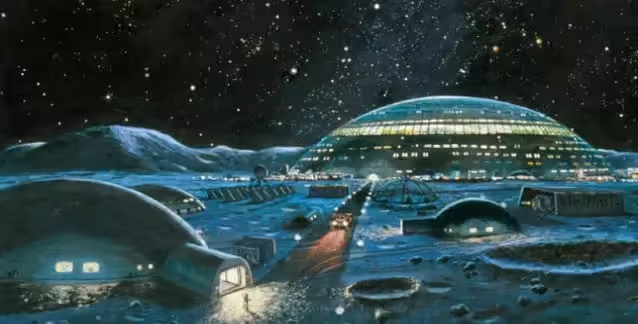
As humanity continues to push the boundaries of space exploration, the architecture of facilities designed for this purpose is evolving rapidly. The future of space exploration architecture is being shaped by new trends such as sustainable design, the integration of artificial intelligence and innovative global perspectives. These elements are not just improvements; they are essential to ensure that our efforts in space are responsible, efficient and capable of meeting the challenges of tomorrow.
Emerging Trends in Sustainable Design for Space Facilities
Sustainability is becoming a cornerstone in the design of space exploration facilities. As we move deeper into the cosmos, the need to minimize our ecological footprint has never been more critical.
- Use of Renewable Resources: Future space facilities are increasingly being designed to utilize renewable energy sources such as solar panels and wind turbines. These sustainable energy systems will power operations while reducing dependence on non-renewable resources.
- Closed Loop Systems: Emerging designs focus on closed-loop life support systems that recycle air, water and waste. This approach not only conserves resources but also creates a self-sustaining environment, especially for long-duration missions to the Moon or Mars.
- Biophilic Design: Integrating elements inspired by nature into space facilities can improve the well-being of astronauts and researchers. Concepts such as natural lighting, green walls and spaces that mimic environments on Earth are being explored to improve mental health during long missions.
- Materials Innovation: Advances in materials science are leading to the development of lightweight, durable materials that can withstand harsh space conditions. These materials can also be sustainably sourced and reduce the environmental impact of facility construction.
- Modular Design: The trend towards modular architecture allows for flexible and scalable facilities. Modular designs can be assembled on-site, minimizing material waste and allowing for easier expansion as tasks grow.
The Role of Artificial Intelligence in Facility Management
Artificial intelligence (AI) is poised to revolutionize the management and operation of space exploration facilities, improving efficiency and safety.
- Predictive Maintenance: By analyzing data from plant operations, AI can predict when equipment may fail. This proactive approach ensures timely maintenance, reducing downtime and keeping critical systems running.
- Resource Optimization: AI algorithms can optimize resource use, from energy consumption to water recycling. By analyzing patterns and making real-time adjustments, AI can help plants operate more efficiently and sustainably.
- Automated Systems: The integration of AI into automated systems can streamline facility management tasks such as environmental monitoring and habitat control. This reduces the workload on human staff and allows them to focus on more complex tasks.
- Improved Safety Protocols: Artificial intelligence can improve security by monitoring conditions on premises and alerting staff to potential hazards. Machine learning algorithms can analyze historical data to identify patterns that may indicate risks and enable preventive measures to be implemented.
- Virtual Assistants: AI-powered virtual assistants can provide real-time support to astronauts and researchers, helping them navigate the complexity of facility operations and giving them access to the information they need.
Global Perspectives on Innovative Space Architecture
The future of space exploration architecture is not limited to a single country or organization; it is a global effort that benefits from diverse perspectives and innovations.
- Collaborative Design Initiatives: International collaborations, as seen in the International Space Station (ISS) program, foster joint architectural innovation. Different countries bring unique cultural insights and technical expertise, resulting in more robust designs.
- Cultural Sensitivity: As space exploration becomes a global endeavor, it is crucial to understand and integrate cultural perspectives into architectural design. This can improve the functionality of facilities and ensure they meet the needs of different teams.
- Emerging Space Countries: Countries new to space exploration, such as Africa and Southeast Asia, are developing innovative architectural solutions suited to their specific needs and resources. This diversity in approach can lead to breakthroughs in sustainable and efficient designs.
- Public-Private Partnerships: Collaborations between government space agencies and private companies foster innovation in space architecture. These partnerships can leverage the strengths of both sectors to develop cutting-edge facilities that push the boundaries of design.
- Global Challenges: As humanity faces global challenges such as climate change and resource scarcity, the design of space facilities can serve as a model for sustainable practices on Earth. By applying lessons learned from space architecture, we can develop solutions that benefit both our planet and our efforts in space.
In conclusion, the future of space exploration architecture is bright and full of potential. By embracing sustainable design trends, harnessing artificial intelligence and bringing together global perspectives, we can create facilities that not only support our exploration of the universe, but also reflect our commitment to responsible and innovative practices. The journey ahead invites us to rethink how we build, operate and interact with the environments we create to ensure we are prepared for the challenges and opportunities that lie beyond our planet.
Discover more from Dök Architecture
Subscribe to get the latest posts sent to your email.



